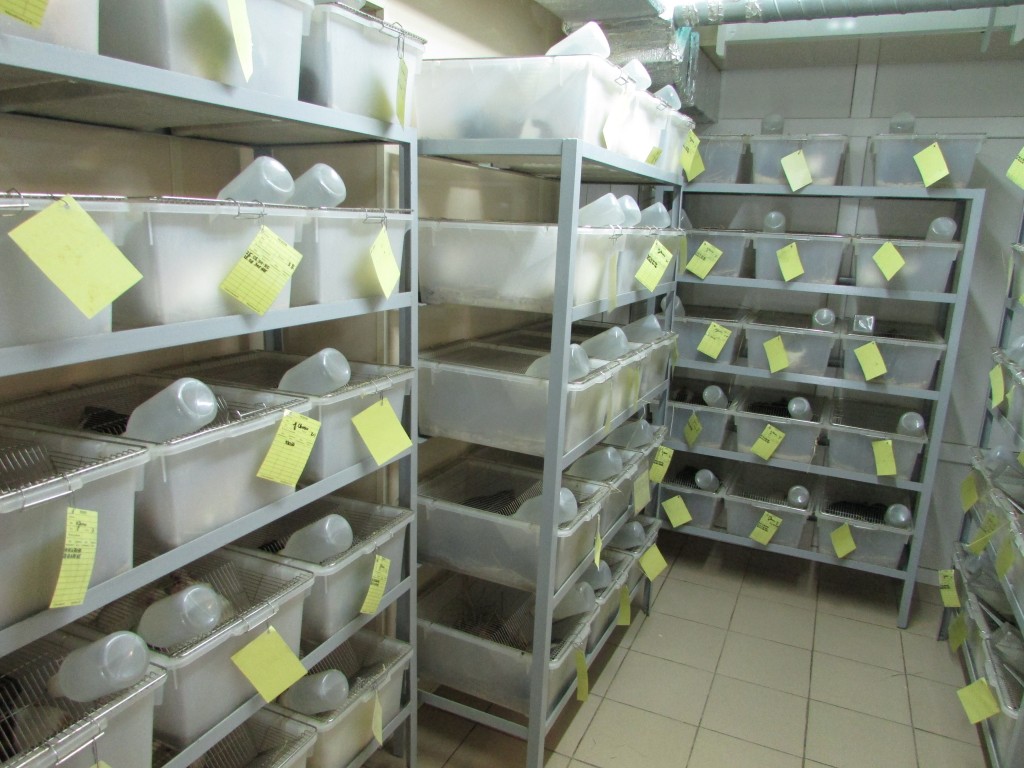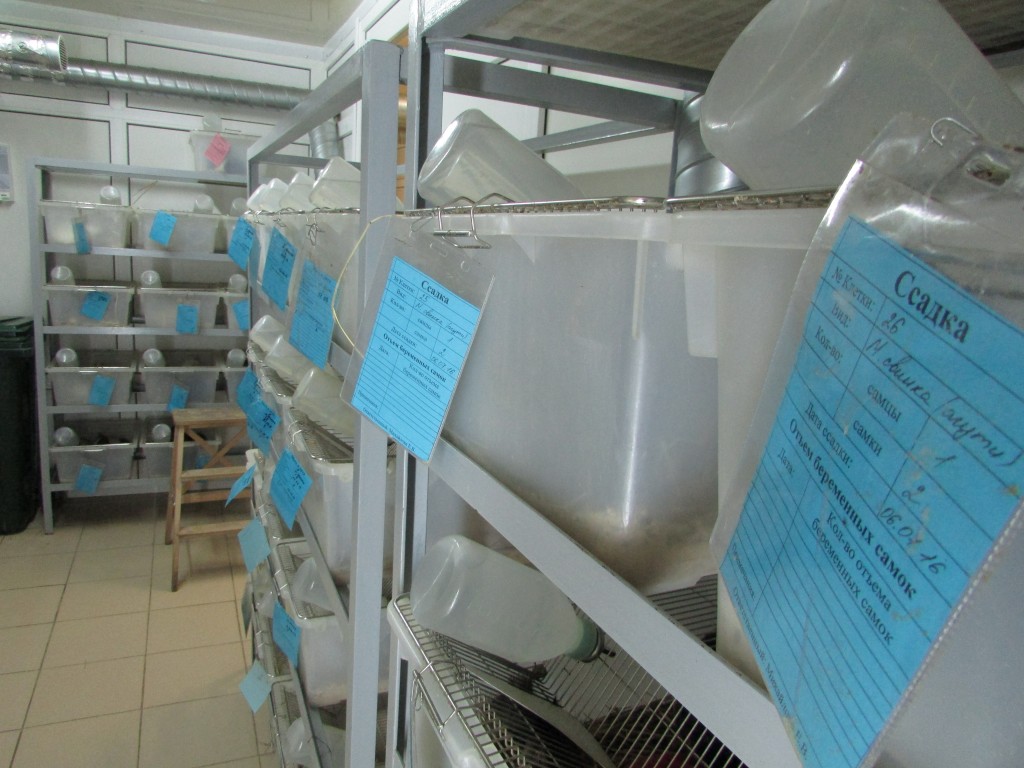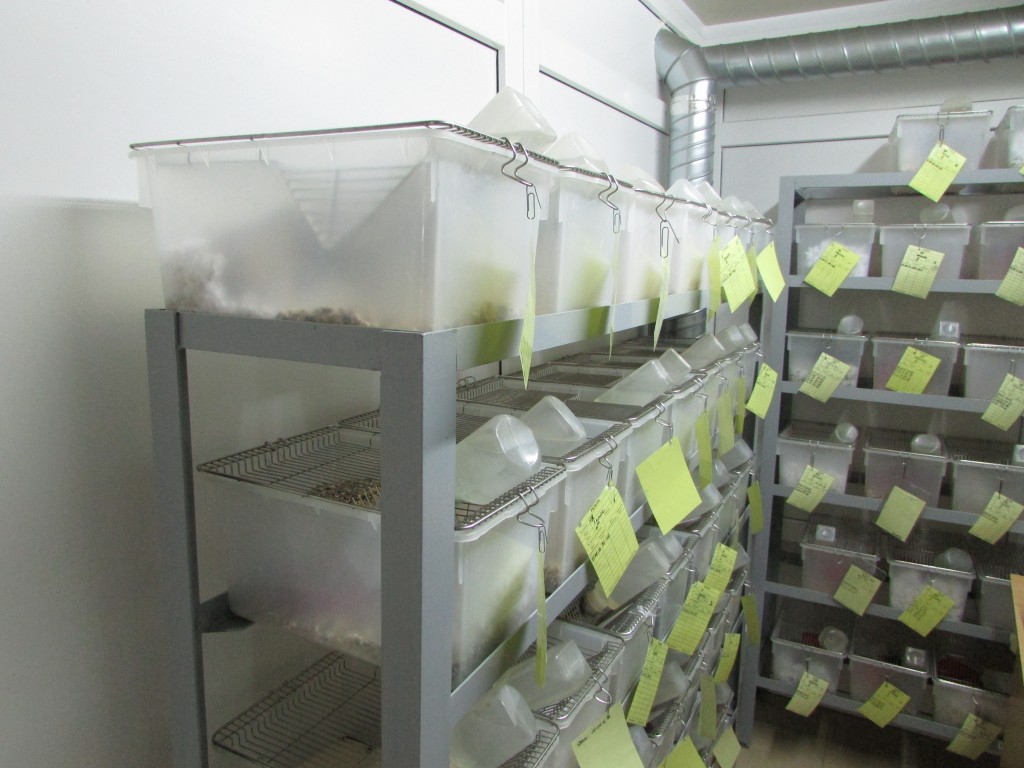To ensure the quality of our research, we use the animals or own breeding obtained in the own nursery of laboratory animals or from reliable sources.
In accordance with the Federal Law of July 13, 2015 N 243-FZ “On Amendments to the Federal Law” On Veterinary Medicine ““RMC “HOME OF PHARMACY has veterinary certificate.
Laboratory Animal Breeding Facility covers an area of 1,800 sq.m. For breeding different types of animals some space allocated. The structure consists of nursery facilities for washing and disinfection of equipment and inventory, facilities for breeding and rearing animals, premises for the storage of feed, bedding and other supplies, room for manipulations with the animals.
All nursery premises have independent ventilation that provides air exchange at least 12-15 volumes / hour. The indoor kennel monitored microclimate in terms of temperature, humidity, level of carbon dioxide and ammonia.
The microbiological monitoring of nursery areas being environment.
Animals kennel are under constant supervision of a veterinarian. Are monitored for Animal Health.
To date, for its research we breed:
| Mice (outbred, Balb/с, C57BL, CBA, DBA) | Mice, rats, hamsters – are used in toxicology, pharmacology, in a large spectrum of diseases model. The advantage of laboratory mice in their small sizes, undemanding to the conditions of detention, the very high rate of reproduction, as well as similarities with the human gene set of almost 99%. Laboratory rats are used in almost all pre-clinical studies. There are a variety of lines of these species, some of them are bred specifically for the simulation of certain pathological conditions have similarities to human illnesses. For example, a line of rats – SHR (spontaneously hypertensive rats), in which high blood pressure develops to 4 months of age. |
| Rats (outbred, Wistar, SHR) | |
| Hamsters (outbred) | Hamsters are widely used in studies of carcinogenesis, reproductive toxicity, cardiovascular diseases. The metabolism of carbohydrates and lipids in hamsters similar to human metabolism, to a greater extent than in rats and mice. It is extremely interesting to study hamsters oro-dispersible drugs and lozenges, by having their cheek pouches. |
| Gerbils, sand rat (outbred) | Gerbils are used mainly for modeling stroke, diabetes, obesity, gastric ulcer induced by Helicobacter pylori, inflammatory diseases. |
| Degu (Chilean squirrel)(outbred) | Degu (Chilean squirrel) is preferably used to model Alzheimer’s disease, diabetes and related complications. |
| Guinea pigs (outbred) | Laboratory guinea pigs is useful in the study of allergic properties of drugs due to their natural sensitivity to allergens. Also for the model of diseases associated with the immune response hyperreactivity. |
| Rabbits (New Zealand, California, Soviet Chinchilla) | aboratory albino rabbits conveniently used in tests for irritation of the eyes, dark-colored rabbits on models with ophthalmic disease research. Most rabbits are used for modeling of atherosclerosis and other dislipoproteinemia, thrombosis, diseases of the musculoskeletal system, eye diseases, infectious diseases. Widely used in toxicology rabbits, especially in those cases when it is necessary to investigate a formulation without destroying the integrity of the tablets (capsules). Rabbits are an indispensable subject for pharmacokinetic assessment. Traditionally used for producing rabbits and antibodies. |
| Mini-pigs (Bishtrasser Knaus) | Minu-pigs also have high genetic and physiological similarity to human metabolic ratio of 1.1, which is their undoubted advantage in animal studies. Mainly used in the study of long-term chronic toxicity to clarify the target organs. The resulting data is used to recalculate the doses Phase I clinical trial to evaluate the maximum safe initial dose at volunteers. Minu-pigs are a good object (in some cases, better than primates) for studying the immunogenicity of biopharmaceuticals. In pharmacology Minu-pigs are studying the effect of drugs for diseases of the cardiovascular system, skin, with metabolic disorders (obesity, diabetes, atherosclerosis), for developing new operational approaches (including dental). Since the estrous cycle in mini-pigs is similar to the human cycle, this type of laboratory animals is interesting to carry out studies on the effect on the reproductive system, assessment of hormonal drugs. |
| Ferrets (outbred) | The toxicology study in ferrets primarily carcinogenicity. In biomedical research, the ferrets used for modeling of infectious diseases (influenza, measles), cardiovascular diseases, vomiting, cough, diseases of hearing and vision, the study of the effectiveness of chemotherapy. |
For each type of animal feeding individual technologies used in nursery habitat enrichment. Type of feeding animals is determined by their nutritional needs in key components, particularly of the digestive system. Enrichment environment enables each type of motor activity necessary, the implementation of the basic instincts.






